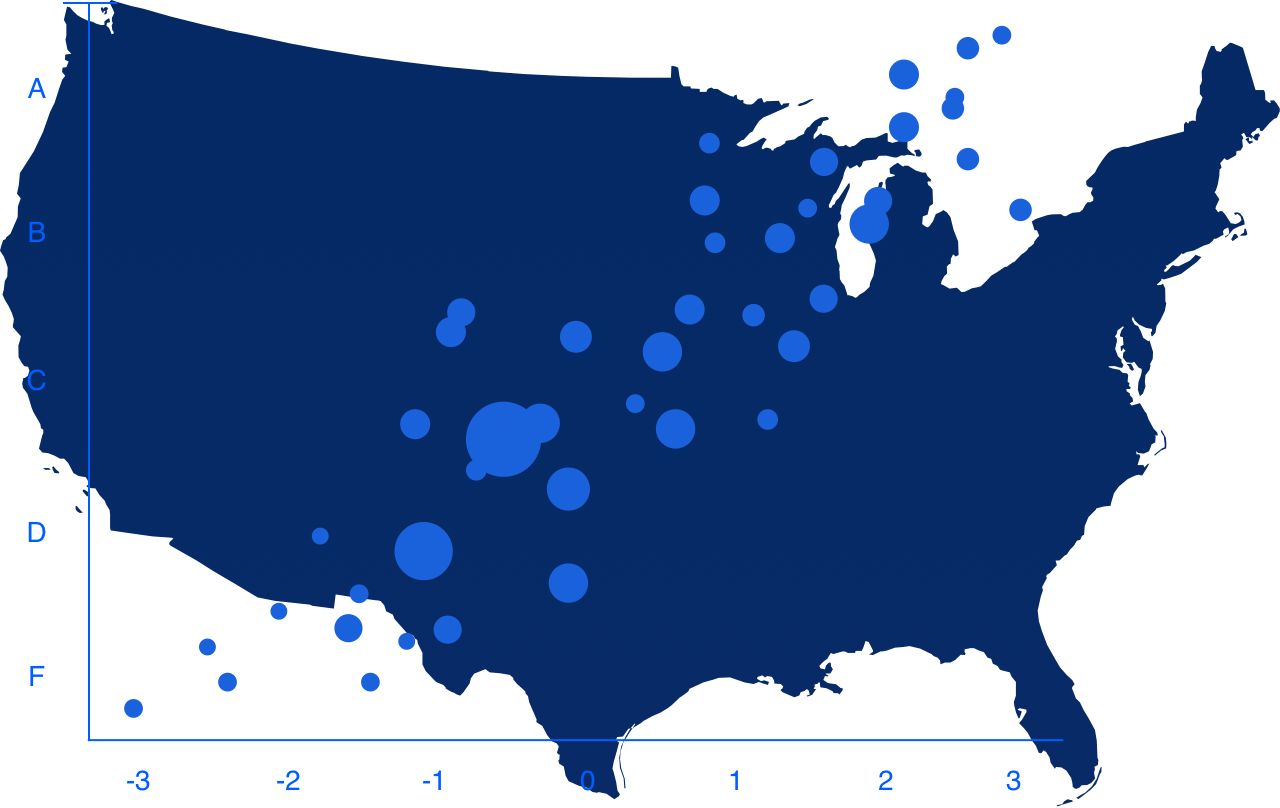
We’re measuring educational opportunity in
every community in America.
We’re measuring educational opportunity in
every community in America.
The Educational Opportunity Project at Stanford University has built the first national database of academic performance. We create applications, research reports, and interactive articles to enable anyone to explore and understand our data.
The Educational Opportunity Project at Stanford University has built the first national database of academic performance. We create applications, research reports, and interactive articles to enable anyone to explore and understand our data.
Our Projects
The 2009-2019 Educational Opportunity Project
The Education Recovery Project
The Segregation Tracking Project
Research
Papers produced by (and using data from) the Stanford Education Data Archive.
The First Year of Pandemic Recovery: A District-Level Analysis
Uneven Progress: Recent Trends in Academic Performance Among U.S. School Districts
Is Separate Still Unequal? New Evidence on School Segregation and Racial Academic Achievement Gaps
Discoveries
Read our featured articles, illustrated with dynamic charts & graphics.
Learning vs Average Achievement for Native Students by County
Erin Fahle & sean f. reardon
Increasing School Segregation Widens White-Black Achievement Gaps
Kaylee T. Matheny, Marissa E. Thompson, Carrie Townley Flores, & sean f. reardon
Racial Socioeconomic Inequality Predicts Growing Racial Academic Inequality
Kaylee T. Matheny, Marissa E. Thompson, Carrie Townley Flores, & sean f. reardon
Learning vs Average Achievement for Native Students by County
Increasing School Segregation Widens White-Black Achievement Gaps
Racial Socioeconomic Inequality Predicts Growing Racial Academic Inequality
Affluent Schools Are Not Always the Best Schools
What Explains White-Black Differences in Average Test Scores?
In the News
February 11, 2025
Most US kids aren’t gaining fast enough in reading and math. These schools are different
"The average American student remains half a grade level behind pre-pandemic levels of achievement in both reading and math."
February 11, 2025
A deep dive on U.S. reading and math scores, and what to do about them
"U.S. students were still nearly half a grade level behind in both math and reading in the spring of 2024, compared with achievement levels before the pandemic. …"
February 11, 2025
Covid Learning Losses
"This morning, a group of academic researchers released their latest report card on pandemic learning loss, and it shows a disappointingly slow recovery in …"
June 26, 2024
Burst in covid spending helped students recover, researchers find
"But despite $190 billion sent to K-12 schools, academic achievement lagged behind pre-pandemic levels."
June 26, 2024
Schools Got a Record $190 Billion in Pandemic Aid. Did It Work?
"Two new studies suggest that the largest single federal investment in U.S. schools improved student test scores, but only modestly."
June 26, 2024
Congress poured billions of dollars into schools. Did it help students learn?
"America’s schools received an unprecedented $190 billion in federal emergency funding during the pandemic ... did that historic infusion of federal relief help …"
June 26, 2024
Here’s What $200 Billion in Covid Money Did for Students
"Federal Covid aid for schools improved test scores, but the impact was modest and many students remain behind, new research finds."
May 20, 2024
School segregation has increased in last 3 decades, study shows
"A new study finds that school segregation has increased over the past three decades, particularly in big cities and other large school districts."
May 18, 2024
Some Black families find school options lacking decades after Brown v. Board
"Some families describe being torn between schools where their children will feel more included on one hand or schools where they might have better academic …"
May 17, 2024
This Map Lets You See How School Segregation Has Changed in Your Hometown
"The new interactive tool accompanies a study of school enrollment data, which shows that segregation has worsened in recent decades."
May 15, 2024
Why school segregation is getting worse
"Researchers at Stanford University and the University of Southern California found that racial segregation in the country’s 100 biggest school districts, which …"
May 6, 2024
The unexpected explanation for why school segregation spiked
"On eve of the 70th anniversary of Brown v. Board of Education, a study finds policy choices explain the rise in segregated schools."

